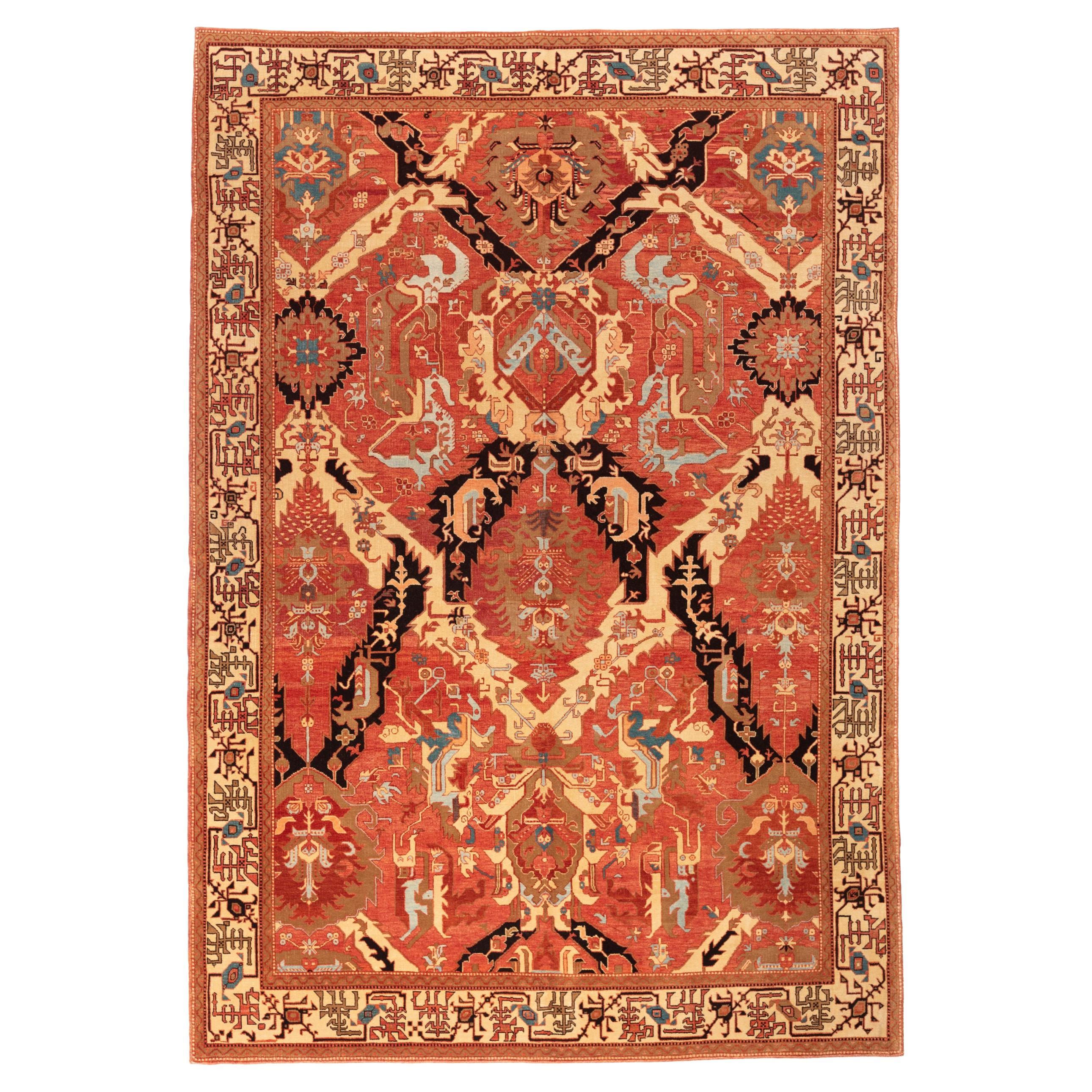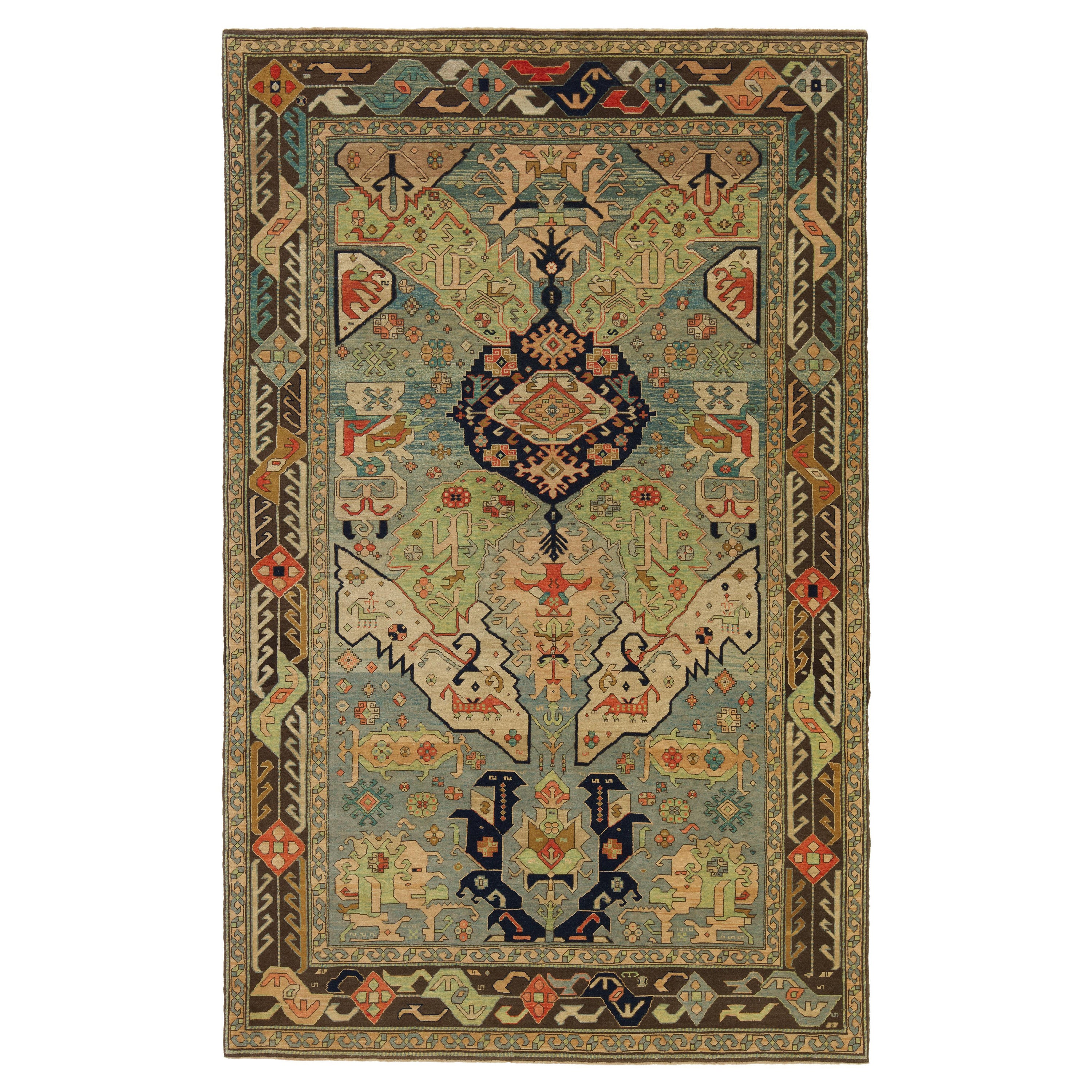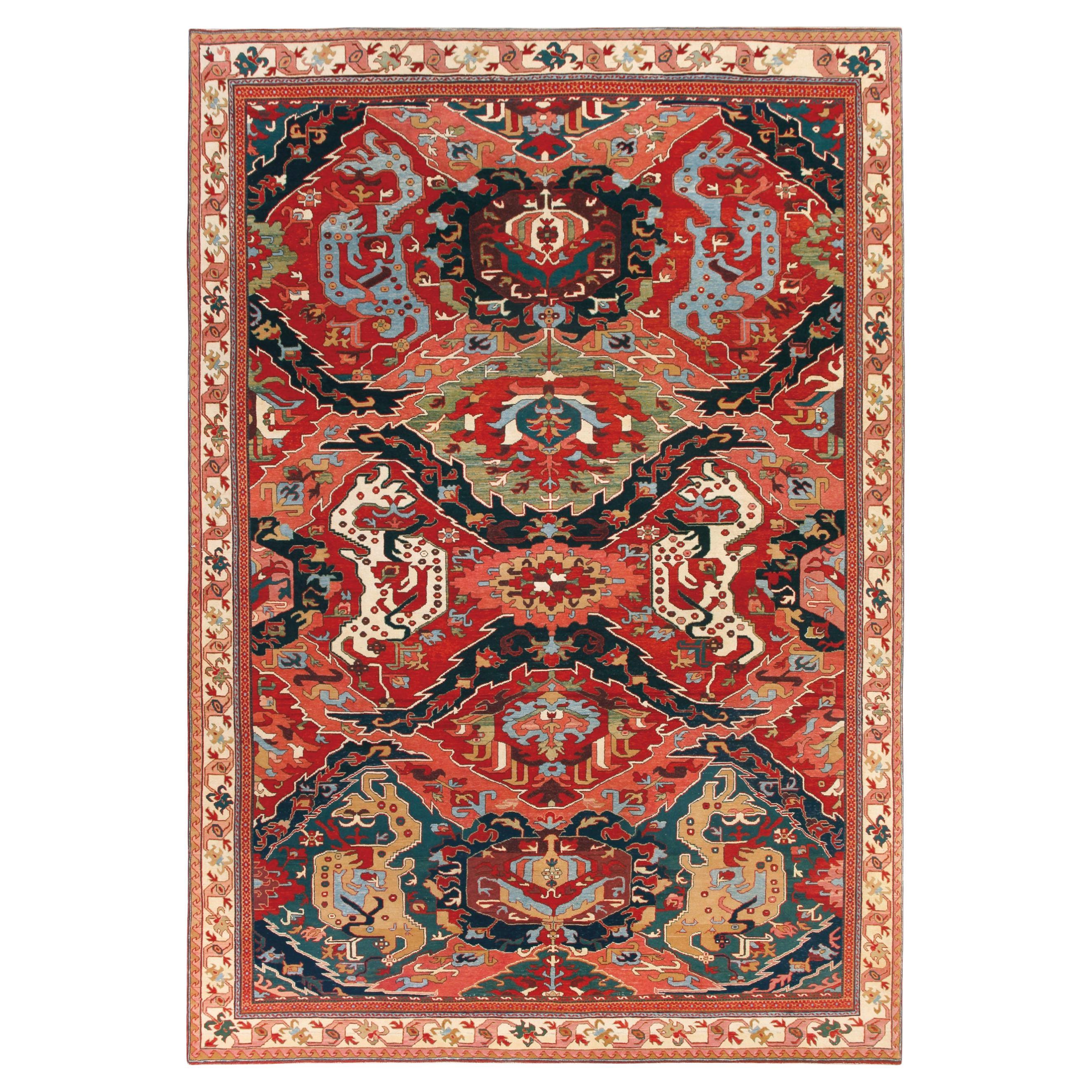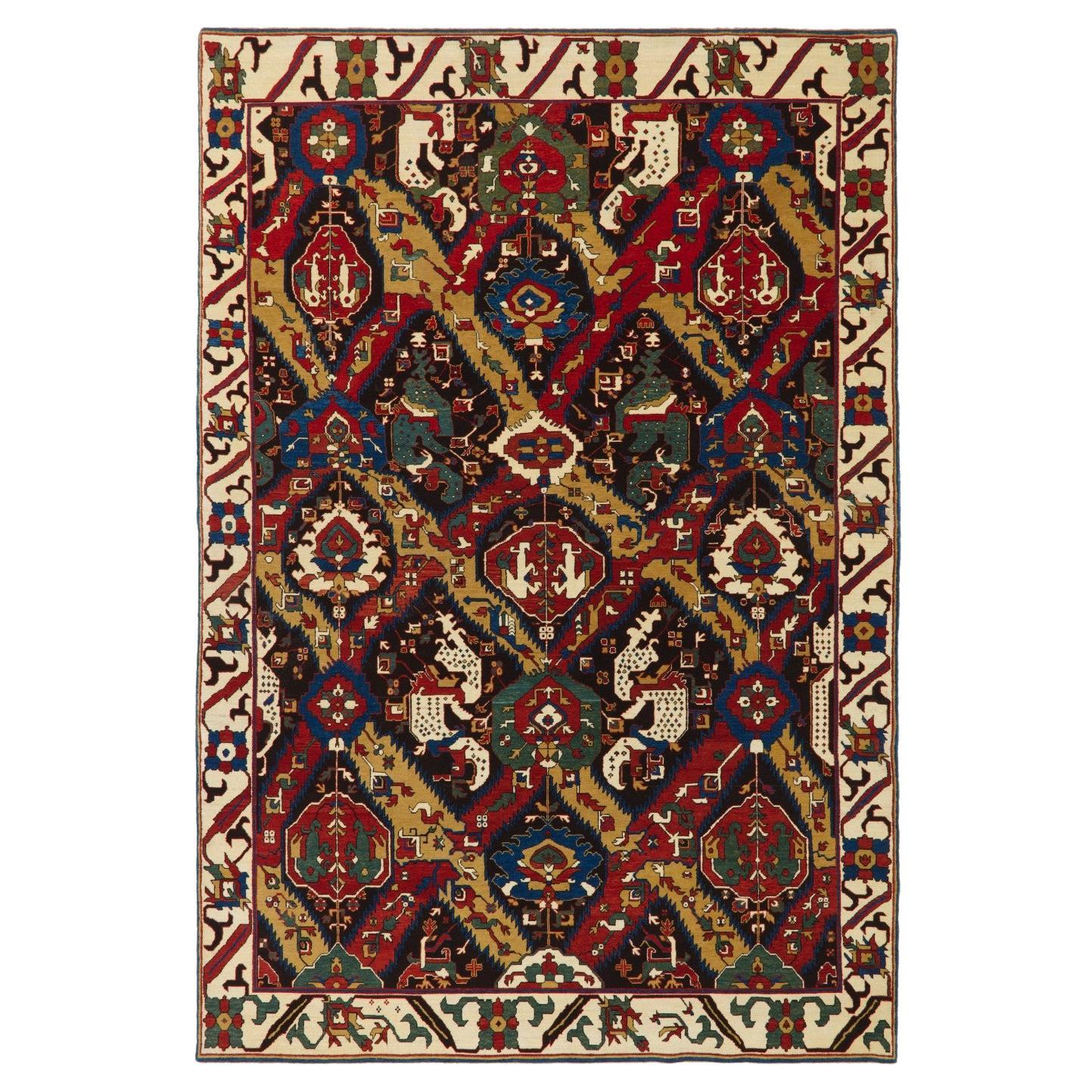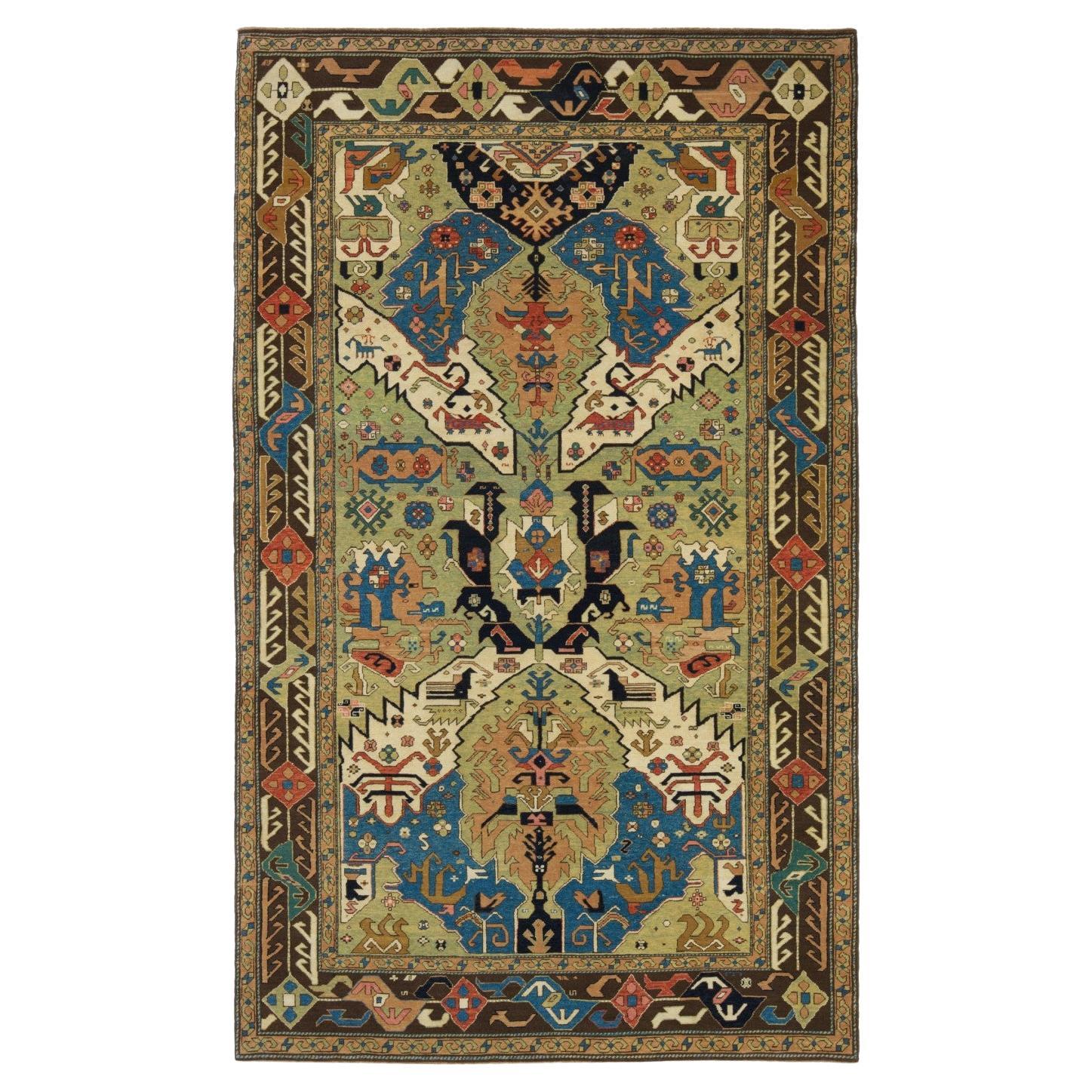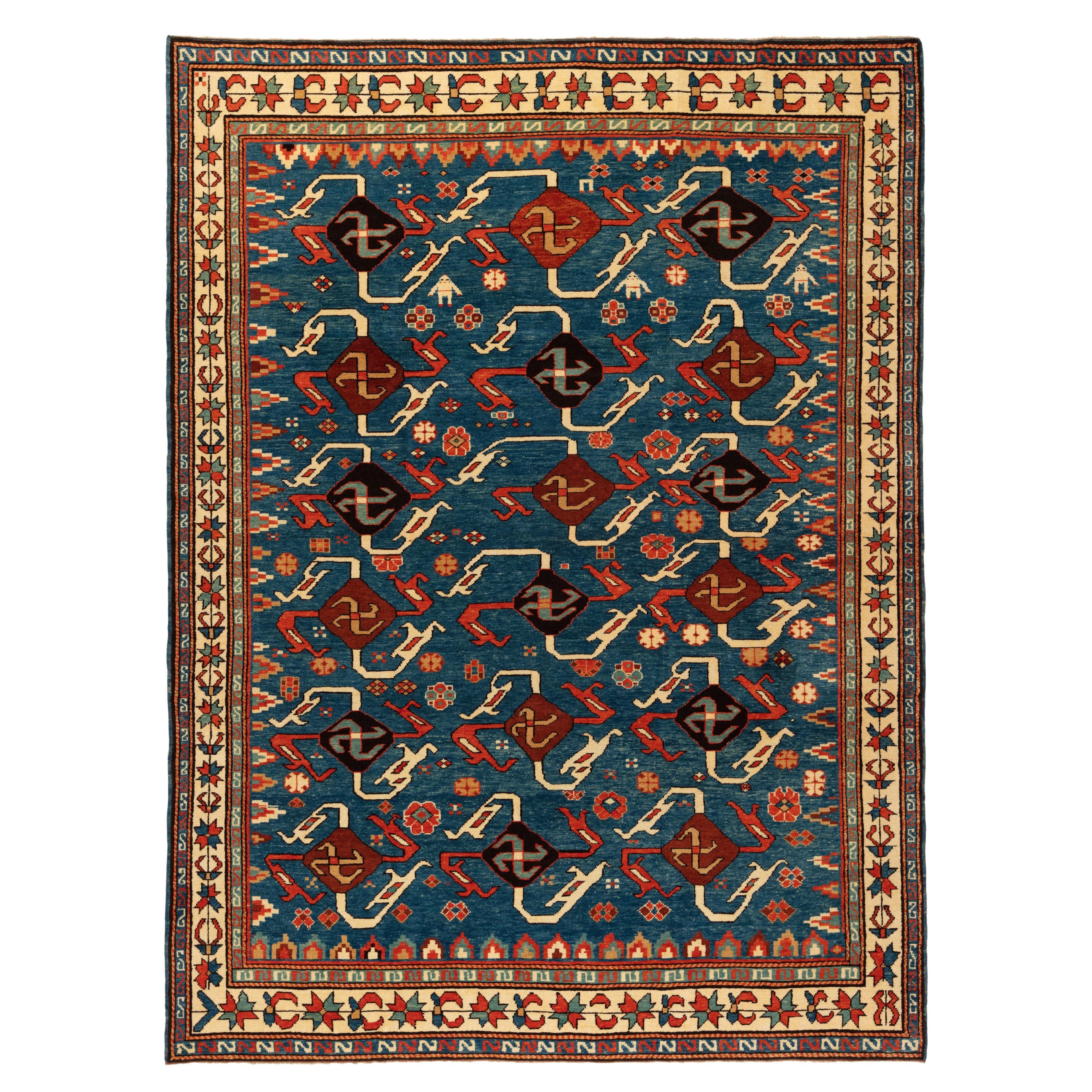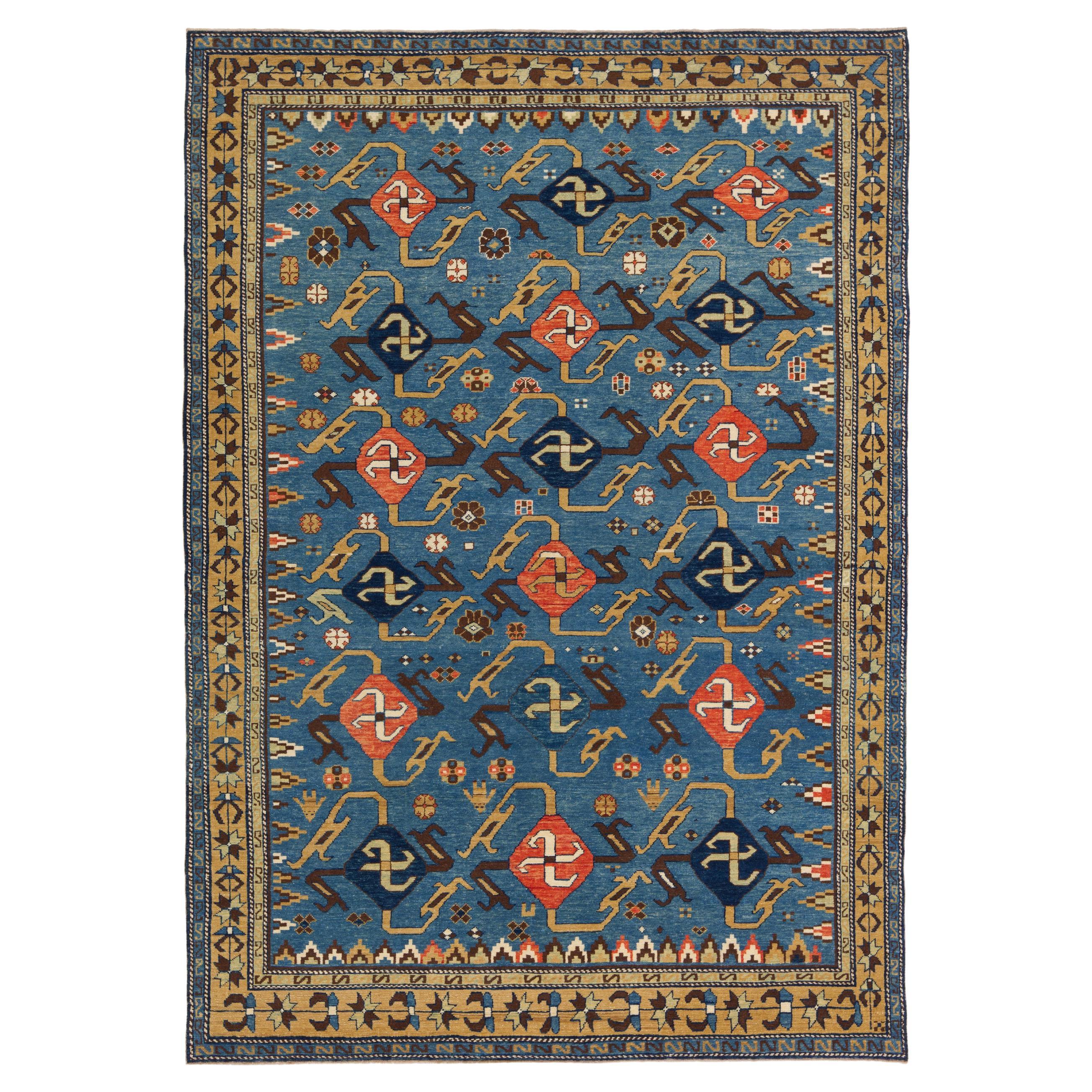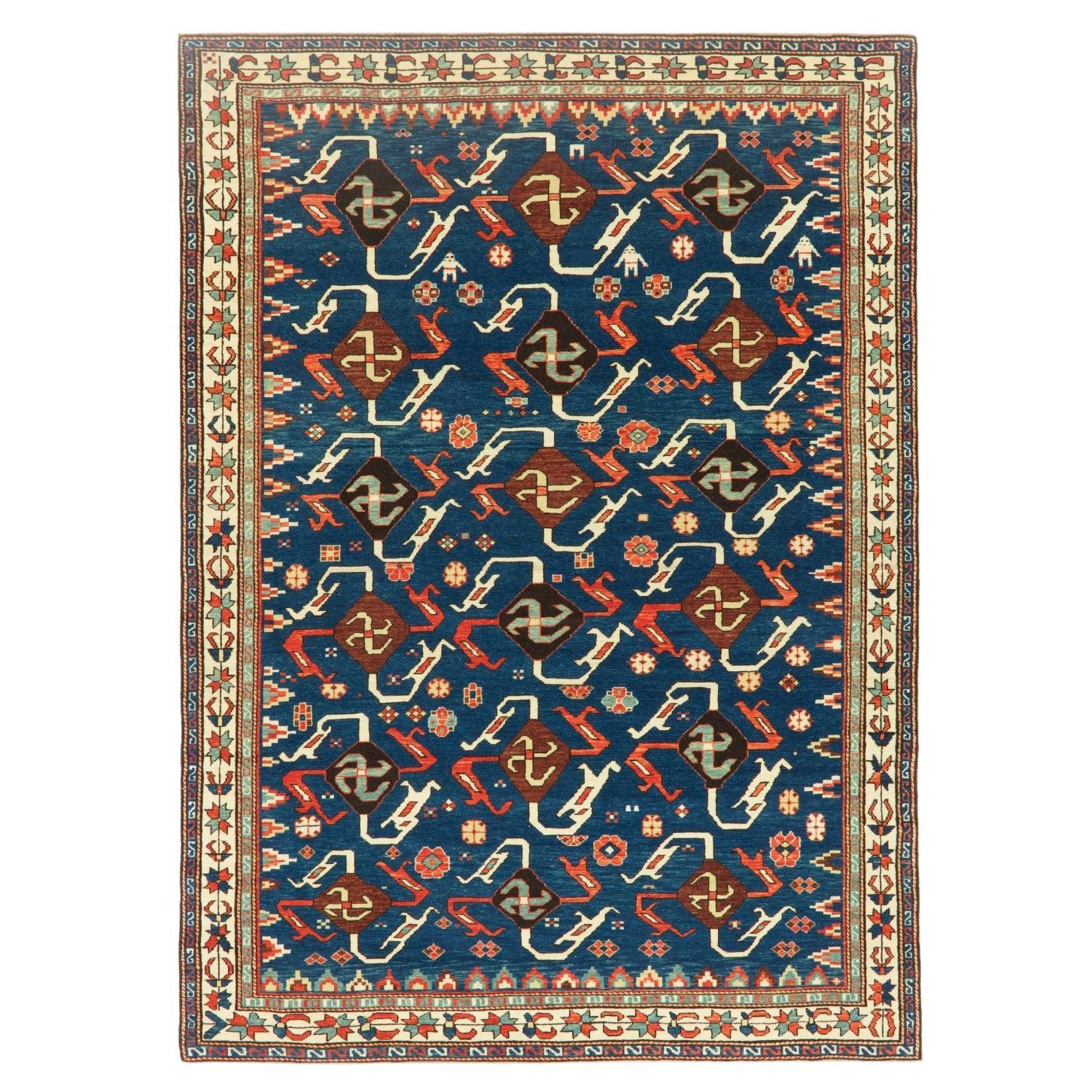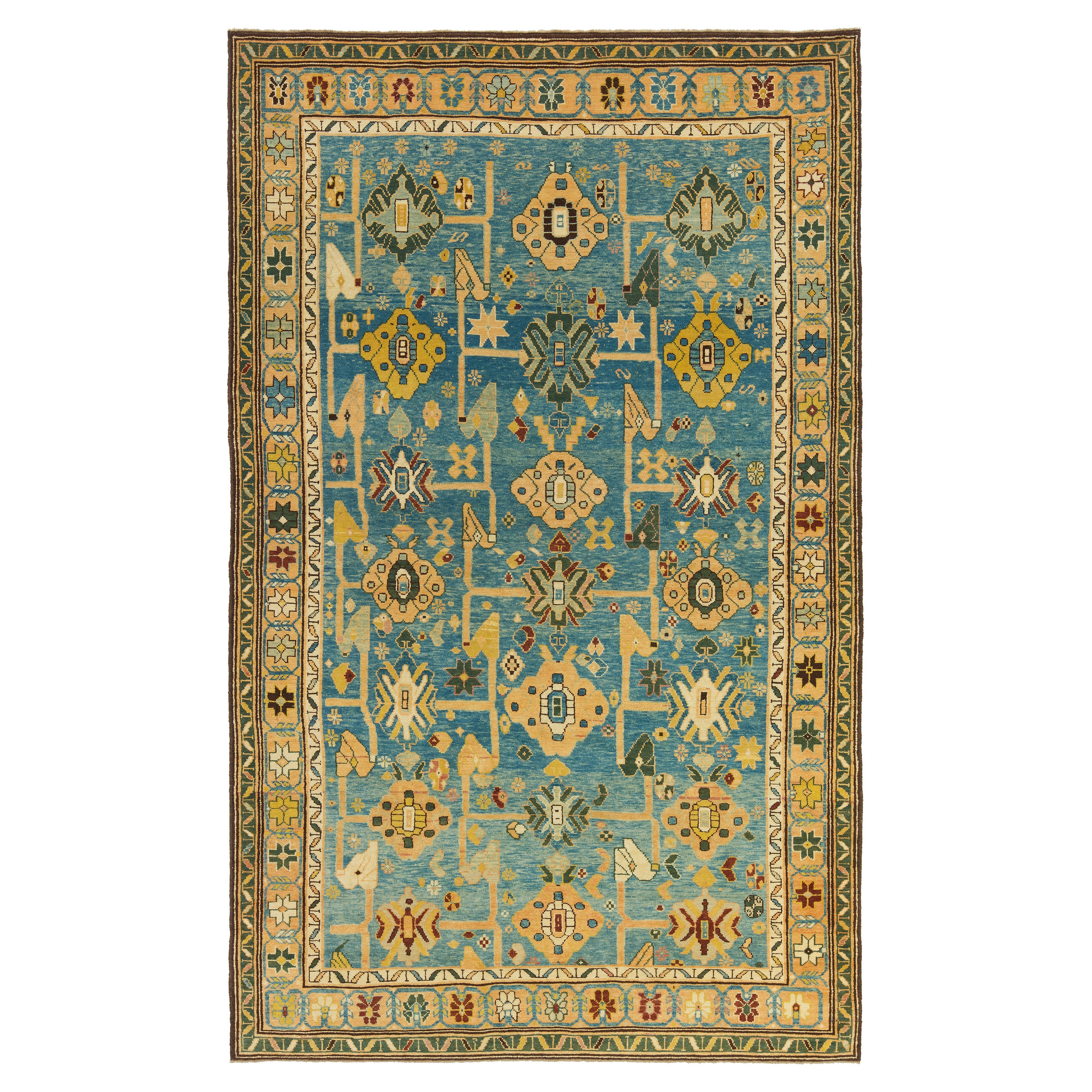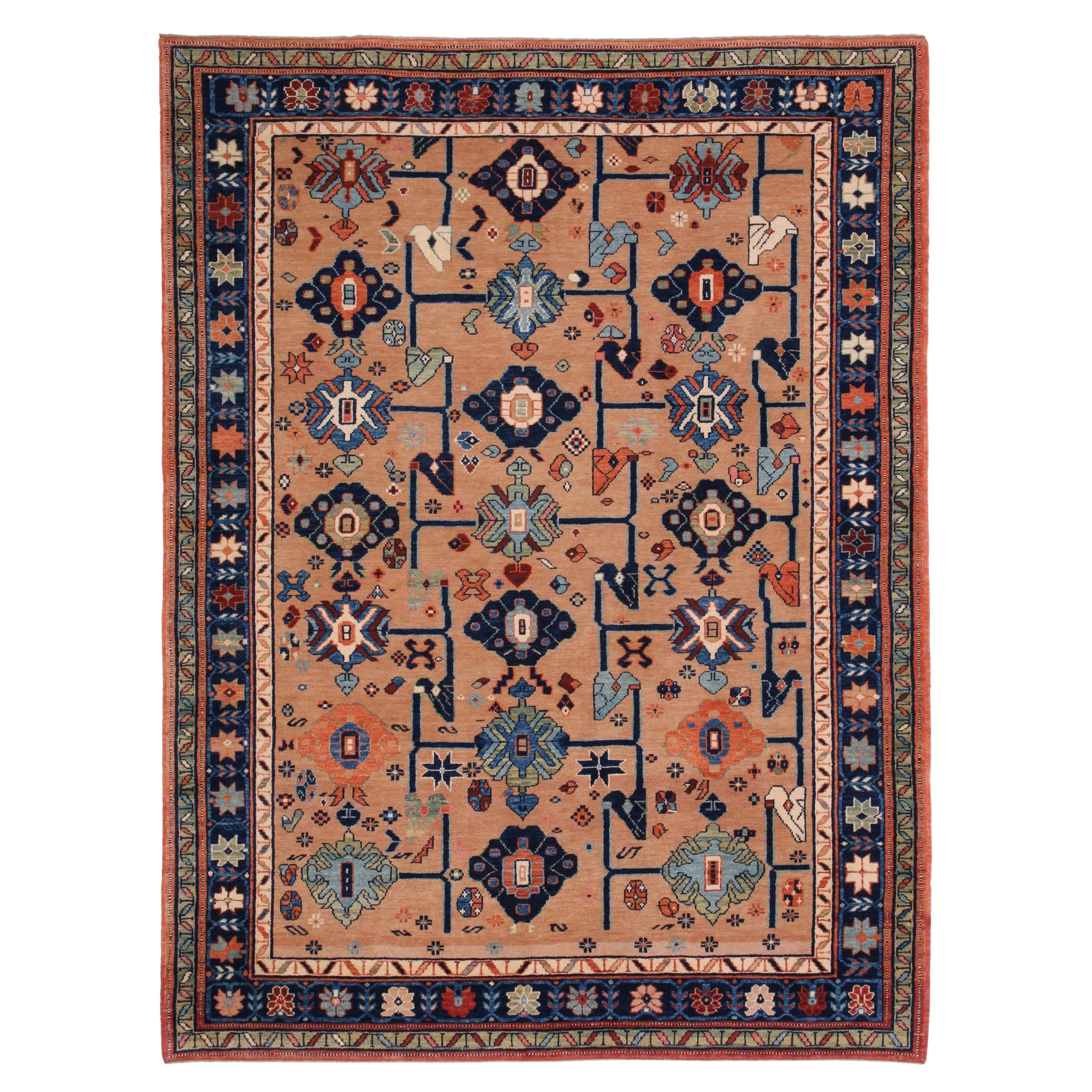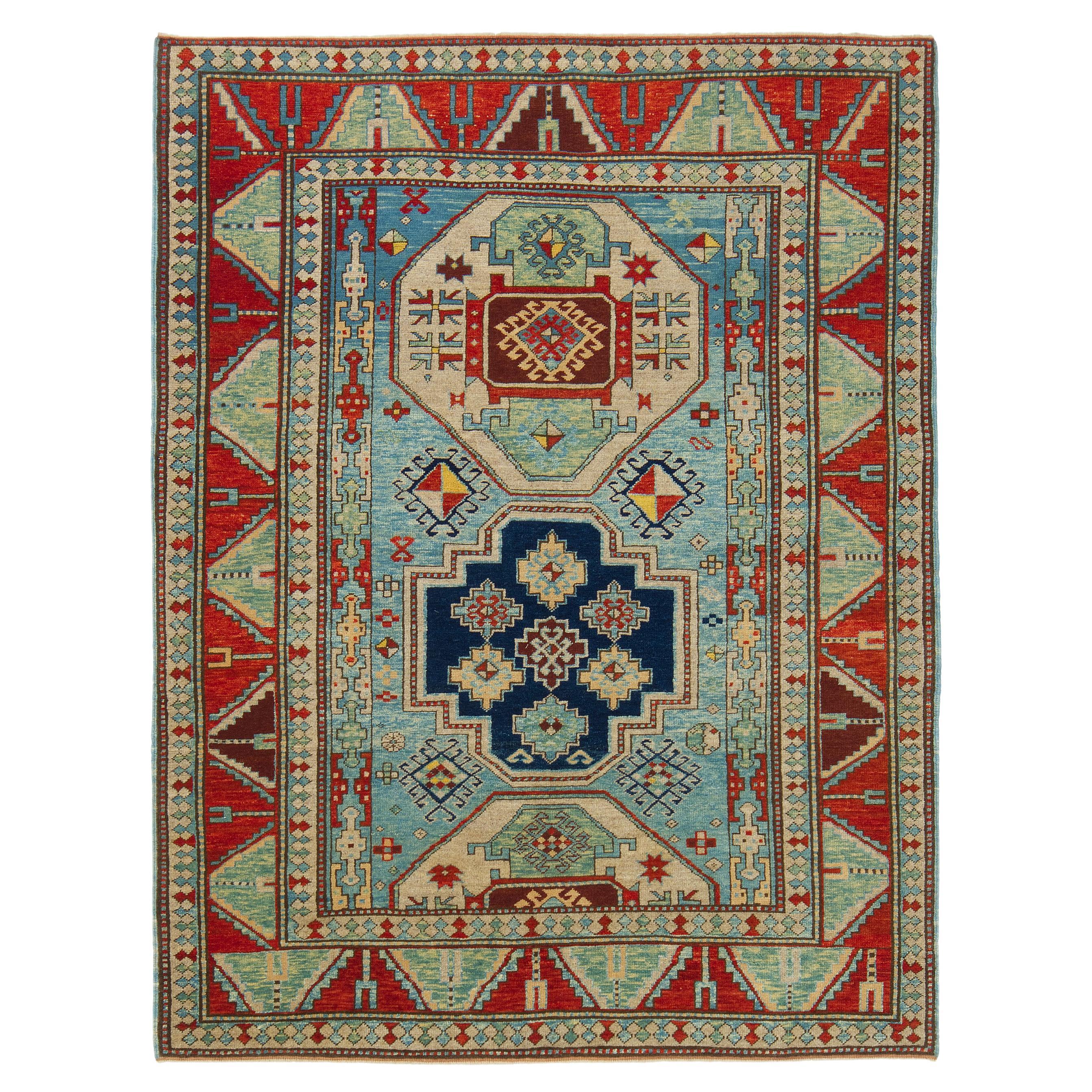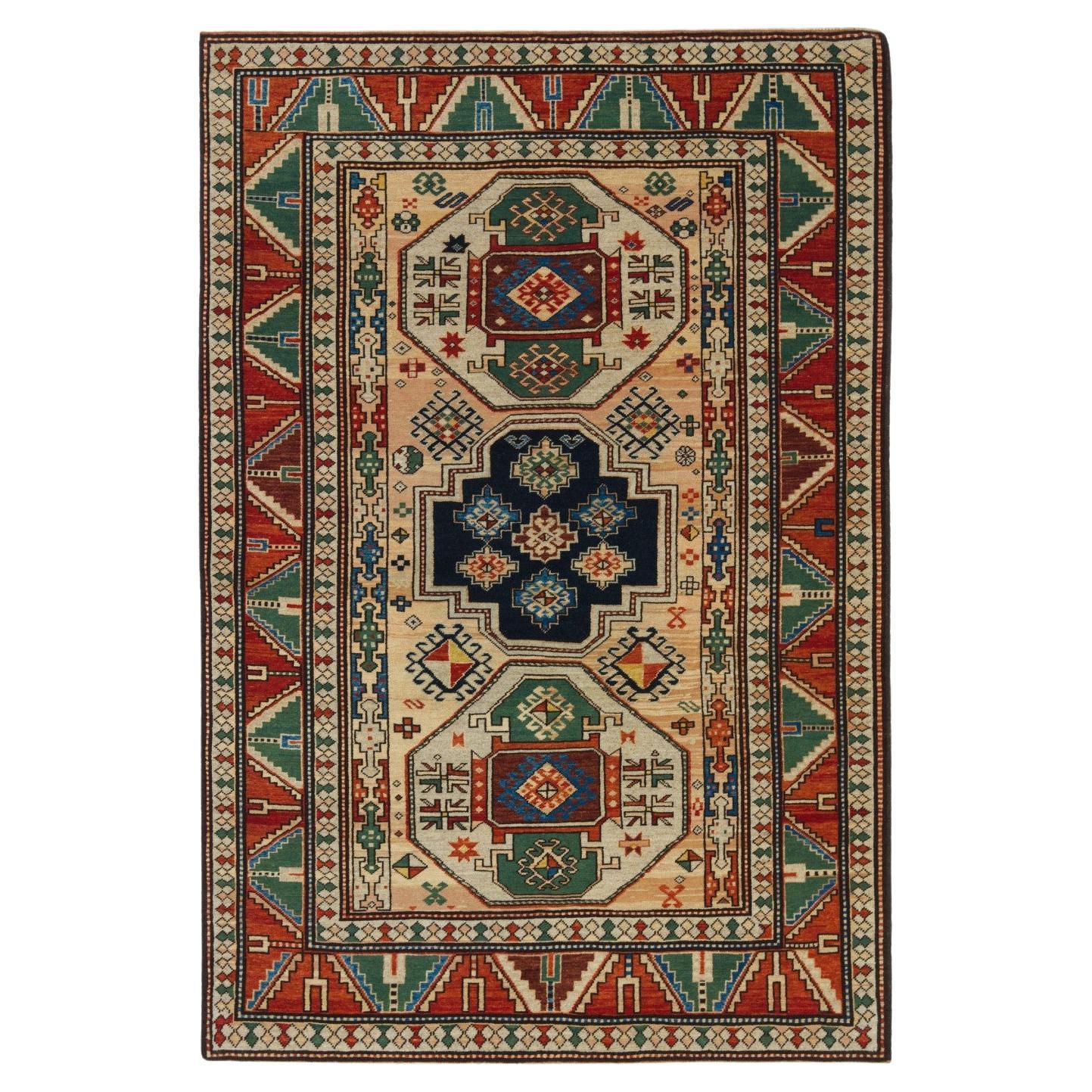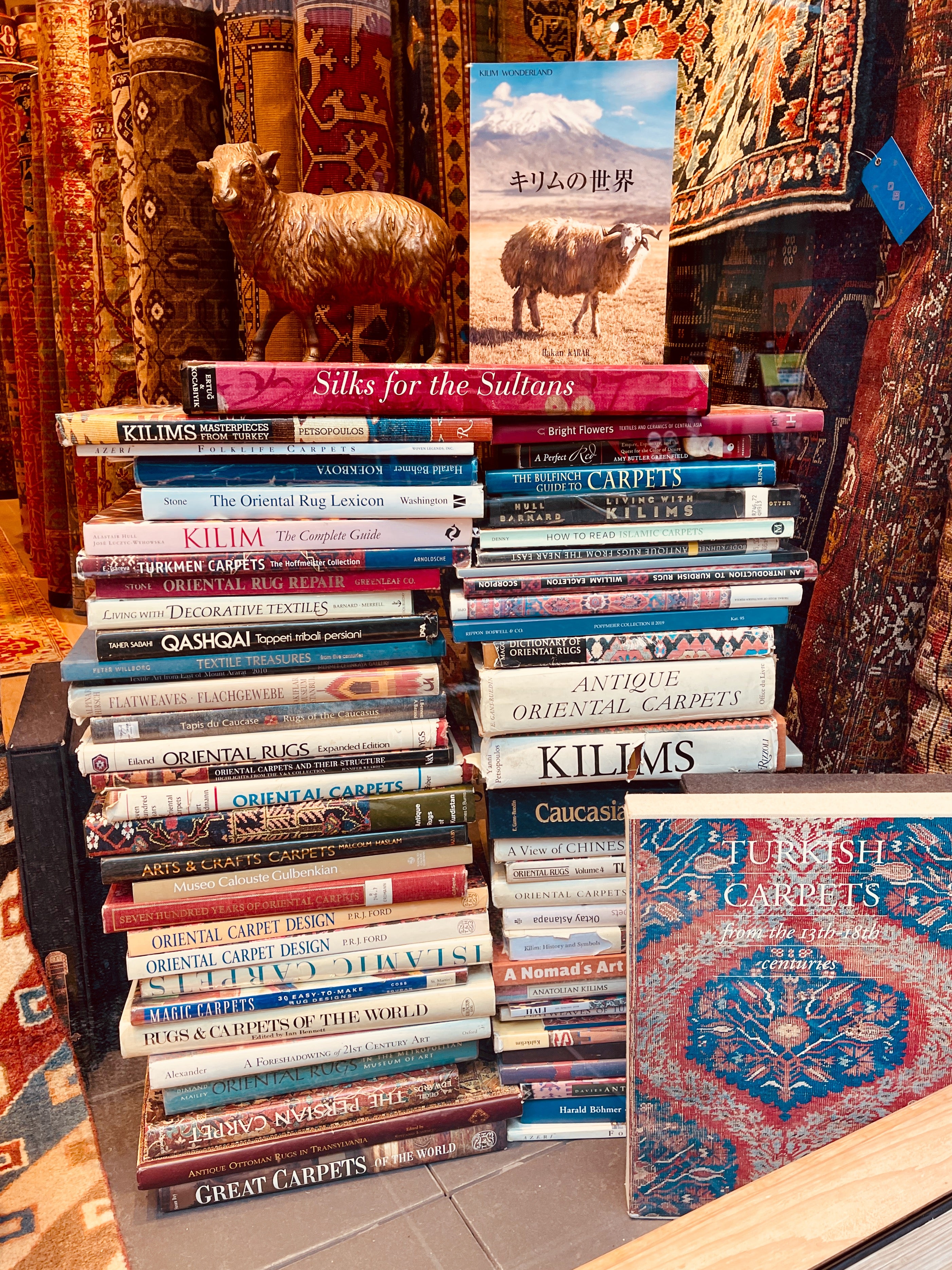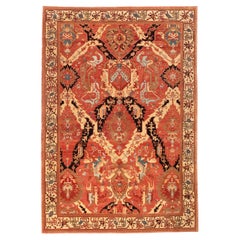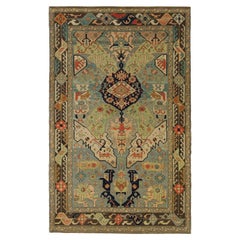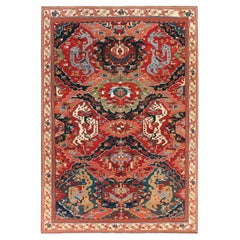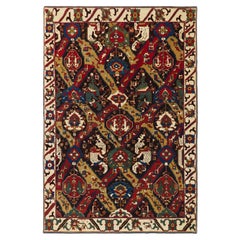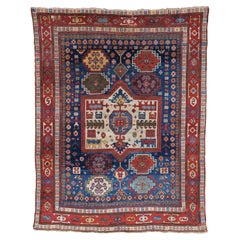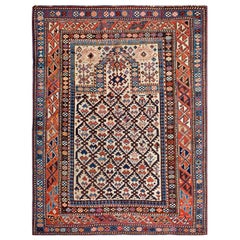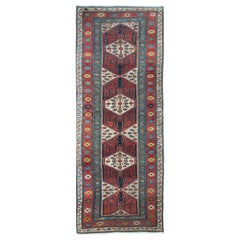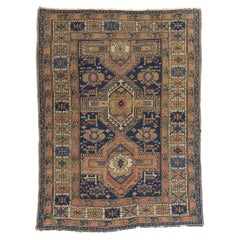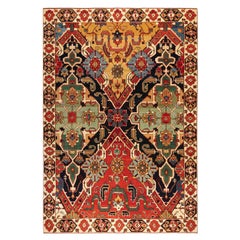
Ararat Rugs Nigde Carpet, Antique Caucasus Museum Revival Rug, Natural Dyed
View Similar Items
Want more images or videos?
Request additional images or videos from the seller
1 of 10
Ararat Rugs Nigde Carpet, Antique Caucasus Museum Revival Rug, Natural Dyed
About the Item
- Creator:Ararat Rugs (Manufacturer)
- Dimensions:Width: 100.4 in (255 cm)Length: 145.67 in (370 cm)
- Style:Revival (In the Style Of)
- Materials and Techniques:
- Place of Origin:
- Period:
- Date of Manufacture:2020
- Production Type:New & Custom(One of a Kind)
- Estimated Production Time:Available Now
- Condition:
- Seller Location:Tokyo, JP
- Reference Number:1stDibs: LU8206232755602
ARARAT RUGS
We know and believe that the geography we come from, our past, and our lifestyle are the most important bond between us to carry the oriental carpet art and culture to the next generations along with our core values in our ongoing growth journey.
We are aware that the way to achieve this goal and carry this priceless art and culture to the future depends on a lot of work with all our people every day while adhering to our core values.
For us, art is meaningful in the sense that it brings together various cultures around the world. It is an honor for us that oriental carpet art and culture have been instrumental in this for centuries and that we are a part of this business.
We are tirelessly keeping an eye on auction house information around the world about carpets. New York's Metropolitan, London's Victoria & Albert Museums, and other famous art museums, as well as small specialized museums that house private collections, and books about oriental carpets to collect information on outstanding carpet designs and patterns from around the world. It's our Self-improving and Self-developing culture.
As Turkish Culture of Hospitality, the Kurdish Culture of Generosity, and as Japanese Culture of Business Punctuality; are the most important values that this multicultural background has taught and bequeathed to us. It is essential and valuable for us that you feel this feeling not only by looking at our oriental carpets but from the moment you contact us.
About the Seller
5.0
Platinum Seller
Premium sellers with a 4.7+ rating and 24-hour response times
Established in 1970
1stDibs seller since 2023
51 sales on 1stDibs
Typical response time: 1 hour
Authenticity Guarantee
In the unlikely event there’s an issue with an item’s authenticity, contact us within 1 year for a full refund. DetailsMoney-Back Guarantee
If your item is not as described, is damaged in transit, or does not arrive, contact us within 7 days for a full refund. Details24-Hour Cancellation
You have a 24-hour grace period in which to reconsider your purchase, with no questions asked.Vetted Professional Sellers
Our world-class sellers must adhere to strict standards for service and quality, maintaining the integrity of our listings.Price-Match Guarantee
If you find that a seller listed the same item for a lower price elsewhere, we’ll match it.Trusted Global Delivery
Our best-in-class carrier network provides specialized shipping options worldwide, including custom delivery.More From This Seller
View AllArarat Rugs Dragon Rug, Antique Caucasus Museum Revival Carpet, Natural Dyed
By Ararat Rugs
Located in Tokyo, JP
The source of the rug comes from the book Caucasian Carpets, E. Gans-Reudin, Thames and Hudson, Switzerland 1986, pg.37. This luxurious and varied work is known as the Cassirer drago...
Category
21st Century and Contemporary Turkish Revival Caucasian Rugs
Materials
Wool, Organic Material, Natural Fiber
Ararat Rugs Dragon Rug, Antique Caucasus Museum Revival Carpet, Natural Dyed
By Ararat Rugs
Located in Tokyo, JP
There has long been a fascination with the symbolism of the dragon and its depiction in carpet weavings. The design of ‘Dragon’ carpets consists of a field pattern composed of different colored overlaid lattices formed of pointed, serrated leaves creating intersecting lozenges, which alternately contain palmettes and are flanked by confronting stylized dragons, birds, or animal figures. The most archaic of the ‘Dragon’ carpets include dragon motifs with birds and running animals relatively naturalistically drawn, which stand either alone or in confronting pairs facing a tree. The Graf carpet, originally found in a Damascene mosque, now in the Islamiches Museum, Berlin, is considered to be the oldest example of this type, see Serare Yetkin, Early Caucasian Carpets in Turkey, Vol. II, London, 1978, p.8, fig.118. Yetkin defines four types of ‘Dragon’ carpet: ‘Archaic’, ‘Four-Dragon’, ‘Dragon-and-Phoenix’ and as a further combined development of the latter, the ‘Two-Dragon’ style, of which the present carpet falls into the ‘Dragon-and-Phoenix group along with other examples, some of which include two fragments, one in the Museum fur Kunst und Gerwerbe, Hamburg; another in the Christian Museum, Esztergom, Hungary, a complete carpet in the Kier collection; an incomplete example in the Textile Museum, Washington, D.C; the ‘Cassirer’ Dragon carpet in the Thyssen-Bornemisza collection, Lugano; the Ali Pasa Mosque carpet in Tokat, and a further example in the Vakiflar Hali Museum, Istanbul (S. Yetkin, op. cit. pp.16-20). It has been suggested that the earliest examples of the Caucasian ‘Dragon’ carpets...
Category
21st Century and Contemporary Caucasian Revival Caucasian Rugs
Materials
Wool, Organic Material, Natural Fiber
Ararat Rugs Dragon Rug, Antique Caucasus Museum Revival Carpet, Natural Dyed
By Ararat Rugs
Located in Tokyo, JP
The source of the rug comes from the book Orient Star – A Carpet Collection, E. Heinrich Kirchheim, Hali Publications Ltd, 1993 nr.57. There has long been a fascination with the symbolism of the dragon and its depiction in carpet weavings. The design of ‘Dragon’ carpets consists of a field pattern composed of different colored overlaid lattices formed of pointed, serrated leaves creating intersecting lozenges, which alternately contain palmettes and are flanked by confronting stylized dragons, birds, or animal figures. The most archaic of the ‘Dragon’ carpets include dragon motifs with birds and running animals are relatively naturalistically drawn, which stand either alone or in confronting pairs facing a tree. The Graf carpet, originally found in a Damascene mosque, now in the Islamiches Museum, Berlin, is considered to be the oldest example of this type, see Serare Yetkin, Early Caucasian Carpets in Turkey, Vol. II, London, 1978, p.8, fig.118. Yetkin defines four types of ‘Dragon’ carpet: ‘Archaic’, ‘Four-Dragon’, ‘Dragon-and-Phoenix’ and as a further combined development of the latter, the ‘Two-Dragon’ style, of which the present carpet falls into the ‘Dragon-and-Phoenix group along with other examples, some of which include two fragments, one in the Museum fur Kunst und Gerwerbe, Hamburg; another in the Christian Museum, Esztergom, Hungary, a complete carpet in the Kier collection; an incomplete example in the Textile Museum, Washington, D.C; the ‘Cassirer’ Dragon carpet in the Thyssen-Bornemisza collection, Lugano; the Ali Pasa Mosque carpet in Tokat, and a further example in the Vakiflar Hali Museum, Istanbul (S. Yetkin, op. cit. pp.16-20). It has been suggested that the earliest examples of the Caucasian ‘Dragon’ carpets...
Category
21st Century and Contemporary Turkish Revival Caucasian Rugs
Materials
Wool, Organic Material, Natural Fiber
Ararat Rugs Dragon Rug, Antique Caucasus Museum Revival Carpet, Natural Dyed
By Ararat Rugs
Located in Tokyo, JP
The source of the rug comes from the book Caucasian Carpets, E. Gans-Reudin, Thames and Hudson, Switzerland 1986, pg.37. This luxurious and varied work is known as the Cassirer drago...
Category
21st Century and Contemporary Turkish Revival Caucasian Rugs
Materials
Wool, Organic Material, Natural Fiber
Ararat Rugs Dragon Rug, Antique Caucasus Museum Revival Carpet, Natural Dyed
By Ararat Rugs
Located in Tokyo, JP
There has long been a fascination with the symbolism of the dragon and its depiction in carpet weavings. The design of ‘Dragon’ carpets consists of a field pattern composed of differ...
Category
21st Century and Contemporary Caucasian Oushak Caucasian Rugs
Materials
Wool, Natural Fiber, Organic Material
Ararat Rugs Swastika Design Rug, Antique Caucasus Revival Carpet, Natural Dyed
By Ararat Rugs
Located in Tokyo, JP
The source of rug comes from the book Orient Star – A Carpet Collection, E. Heinrich Kirchheim, Hali Publications Ltd, 1993 nr.17. This is a remarkable and...
Category
21st Century and Contemporary Turkish Revival Caucasian Rugs
Materials
Wool, Organic Material, Natural Fiber
You May Also Like
Antique Caucasian Rug - Rare Caucasian Carpet, Caucasus Rug, Antique Rug
Located in Sultanahmet, 34
Rare Caucasian Rug Caucasus Rug
Size: 176×224 cm
This wonderful rug is a formerly unpublished addition to a small and rare group of blue-ground Caucasian rugs whose design is dominated by a prominent decahedral gabled ivory medallion. The overall pattern echoes that of a group of earlier 17th and 18th century north west Persian carpets, whose designs were based upon the Persian garden plan known as the “Four Gardens” or Chahar Bagh (M.S.Dimand & J. Mailey, Oriental Rugs in the Metropolitan Museum of Art, New York, 1973, p.84, fig.116). The smaller lozenges that extend above and below the central medallion on the present lot, are linked by a narrow vertical channel which represents the streams and ornamental pools that feed the flowering trees and shrubs on either side. The once eight-pointed medallion, that is an archaic form found in early Anatolian and Caucasian rugs, and which continues to be used throughout the nineteenth century in Fachralo rugs...
Category
Antique 19th Century Caucasian Caucasian Rugs
Materials
Wool
Antique Caucasus Rug
Located in New York, NY
Antique Caucasus rug, measures: 4'0" x 5'0".
Category
Antique 1890s Caucasian Caucasian Rugs
Materials
Wool
$3,750
Antique Rugs, Kazak Rug, Handmade Carpet Runner Oriental Rug from Caucasus
Located in Wembley, GB
An antique rug rare Caucasian Kazak handmade carpet from the 18th century. This carpet is with an unusual geometric rug pattern on red brick background. This woven rug is surrounded ...
Category
Antique Early 1800s Caucasian Kazak Caucasian Rugs
Materials
Wool, Cotton, Organic Material
Antique Earth-Tone Caucasus Kuba Carpet
Located in Dallas, TX
78899 Antique Caucasian Kuba Rug, 04'05 x 05'03. Caucasian Kuba rugs, originating from the northeastern Caucasus in present-day Azerbaijan, are celebrated for their intricate geometr...
Category
Early 20th Century Caucasian Kazak Caucasian Rugs
Materials
Wool
$3,248 Sale Price
20% Off
Antique Caucasus, Kuba Rug
Located in New York, NY
Antique Caucasus - Kuba rug 3'2" x 3'10".
Category
Antique 1890s Caucasian Caucasian Rugs
Materials
Wool
Karebagh Carpet from Caucasus
Located in Alessandria, Piemonte
Typical Caucasian rug with a strong personality and a modern style .. Its four polychrome medallions occupy the red field in contrast with the black background. The blue of indigo ...
Category
Mid-20th Century Caucasian Other Caucasian Rugs
Materials
Wool
Recently Viewed
View AllMore Ways To Browse
Adrian Pearsall Boomerang Table
Adrian Pearsall Havana Chair
Adrian Pearsall Havana Lounge Chair
Adrian Pearsall Havana Lounge
Adrian Pearsall Havana
Adrian Pearsall Jacks Coffee Table
Adrian Pearsall Wave Chair
African Throne Chair
Aj Chair
Alexander Wilson Birds
Allegri Arredamenti
Alta Vista Lane
Althorp Collection
Aluminum Hat Mold
Aluminum Skeleton Chair
Alvar Aalto Hallway Chair
Alvar Aalto Model 65
American Blown Glass Pitcher
